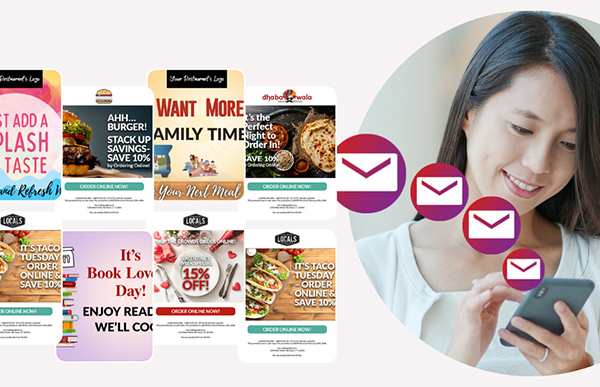
In the fast-paced world of the restaurant industry, staying connected with your customers outside of the dining room is just as crucial as the culinary experience within it. Say hello to email marketing, an often underutilized tool that, when done correctly, can transform one-time diners into loyal patrons. In this write up, we will talk about why restaurant email campaign matter, how to craft the perfect email, how to build an email list, and how to track your progress.
Why Restaurant Email Campaign Matter for Restaurant Owners
Recent data underscores the potency of email marketing, with some studies suggesting email campaigns yield an average ROI of $42 for every $1 spent. For restaurants, the ability to directly reach diners’ inboxes is invaluable. Not only does it offer a platform to showcase new menus, promotions, and events, but it also personalizes the dining experience, making customers feel valued and known.
But why email? Unlike the ephemeral nature of social media, emails remain in customers’ inboxes, allowing them to engage with the content on their timetable. This staying power makes email campaigns an essential strategy for cultivating customer loyalty.
Crafting the Perfect Email
The recipe for a successful restaurant email begins with the subject line. Like the aroma wafting from a kitchen, an enticing subject line lures recipients to open the email. Keep it short, sweet, and to the point, sparking curiosity or offering value that’s too good to ignore.
Once opened, the content should reflect the restaurant’s essence, whether it’s the warmth of a family-run bistro or the sophistication of fine dining. Personalize messages based on customer data (for example favorite dishes, birthday month offers) to foster a deeper connection. High-quality visuals of dishes or behind-the-scenes peeks can transform a mundane message into a feast for the eyes, enhancing engagement. Finally, encourage action with a clear call to action, whether it’s making a reservation, viewing the latest menu, or following your social media channels.
Building Your Email List
Growing an email list is foundational to any campaign’s success. Start by leveraging your website with a simple signup form, incentivizing sign-ups with a discount or free appetizer. In-restaurant strategies such as QR codes on tables or offers on receipts can convert diners into subscribers. Remember, the goal is to create a list of engaged and interested customers, so quality trumps quantity.
Segmentation is the next step, dividing your list into groups based on criteria like dining frequency, menu preferences, or demographics. This allows for targeted emails that resonate more deeply with recipients, increasing the likelihood of conversion.
Measuring Success
Tracking the success of your campaigns is vital to refine and improve future efforts. Key metrics to monitor include open rates, click-through rates, and conversion rates. These indicators help gauge content relevance and the effectiveness of your calls to action. Employ A/B testing by sending two variations of your email to a small segment of your list to see which performs better. This ongoing optimization process is key to maximizing your email marketing’s impact.
Conclusion
In a digital age where personalization and engagement are paramount, email marketing offers restaurants a potent tool to delight and retain customers. By crafting compelling emails, building a robust list, and continuously refining your approach based on performance data, your restaurant can enhance its digital footprint, foster patron loyalty, and boost its bottom line. Start sending those emails and watch your restaurant’s community and business flourish.
Fortunately, there are restaurant marketing automation tools on the Internet that can help you with making successful restaurant email campaign with ease. You just have to sign up on these restaurant automation marketing tools and the rest will be taken care by them.








